
How to grow bitter melon to produce fruit and provide shade in your home garden
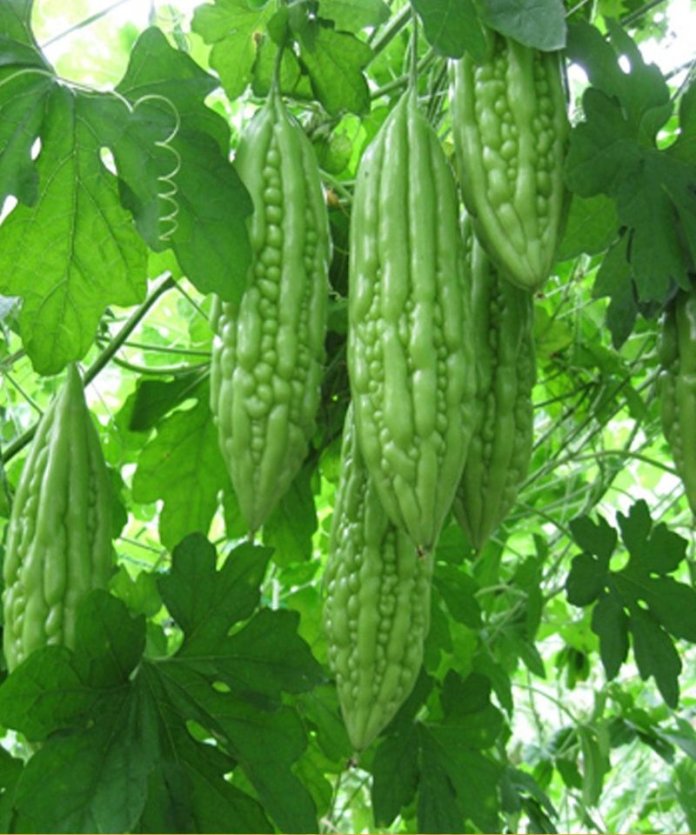
How to Grow Bitter Melon Successfully at Home for a Heavy Harvest
Bitter melon, also known as bitter gourd, is a popular vegetable that many people love for its distinctive flavor and health benefits. If you’re a fan of this unique fruit, why not grow your own vine right in your garden? With the right techniques, you can enjoy a lush, productive crop that yields plenty of fruits throughout the season.
Bitter melon is generally easy to grow and thrives even in hot climates. However, to achieve the best results, it’s ideal to plant it in loose, well-drained sandy soil enriched with organic matter.
1. Collecting Seeds
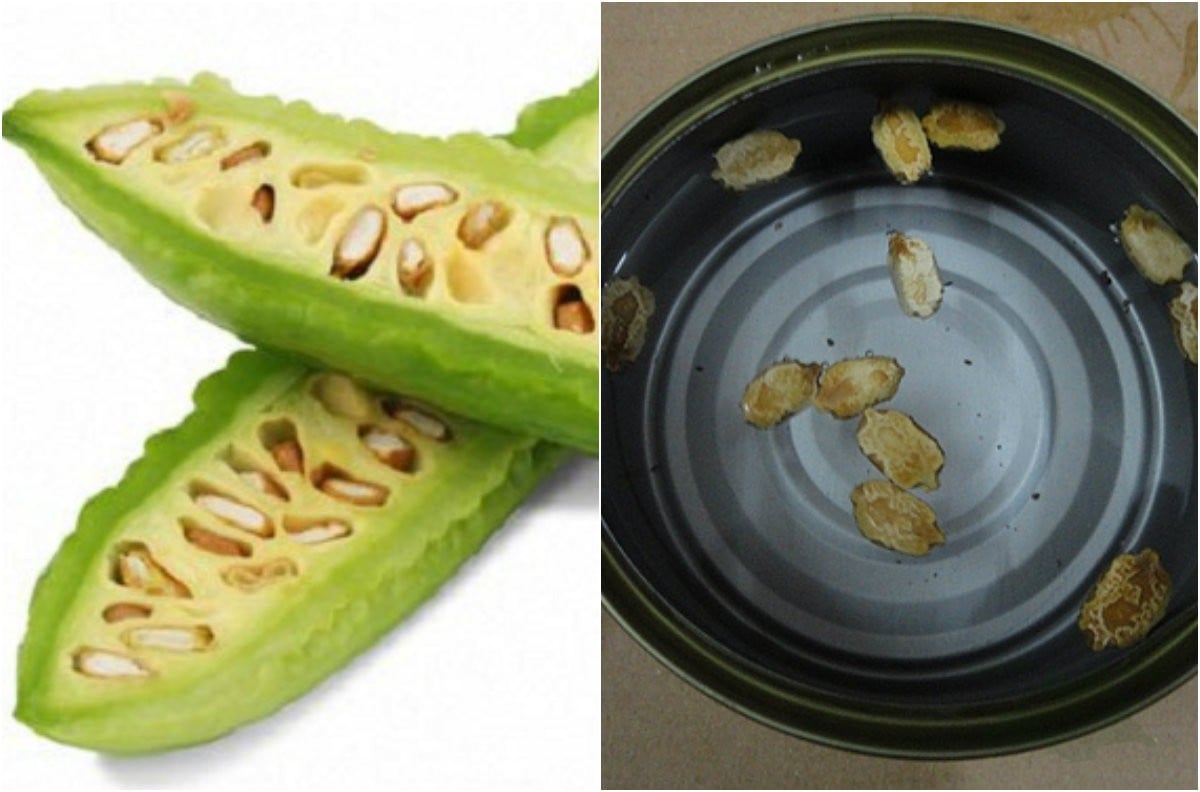
You don’t necessarily need to visit a gardening store to buy seeds. Instead, simply choose large, firm, mature bitter melons and save the seeds inside. Bigger and heavier fruits tend to produce better-quality seeds.
After removing the seeds, wash them thoroughly and discard any flat or damaged ones. If you aren’t planting immediately, dry the seeds completely and store them in an airtight container until use.
2. Germinating the Seeds
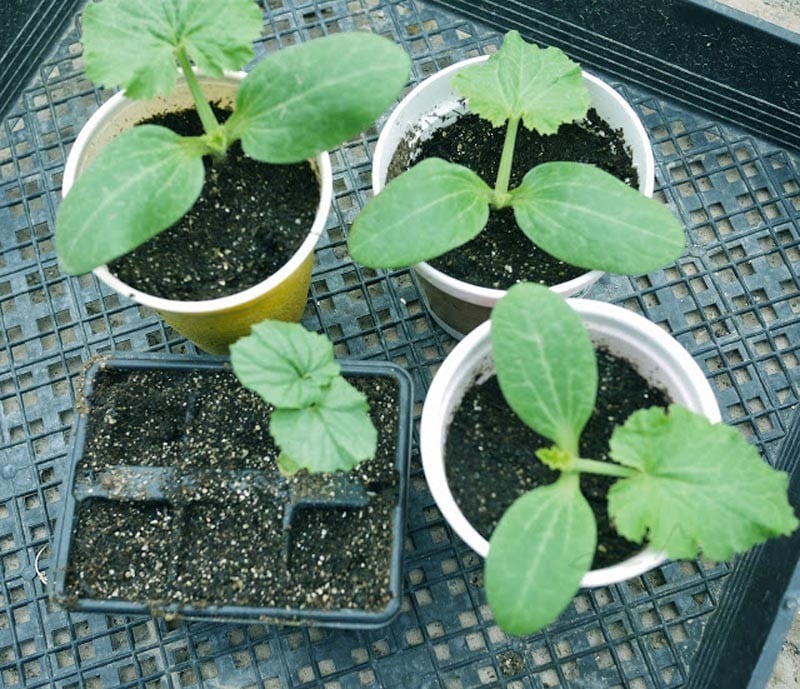
Before sowing, soak the seeds in warm water for 5–6 hours. Then wrap them in a damp cloth overnight until the seeds crack and reveal a small root tip. This step helps speed up germination and ensures stronger seedlings.
When sowing, position the cracked tip downward and cover it with a thin layer of soil. Water lightly afterward. Bitter melon seeds usually sprout within 7–10 days.
3. Making a Trellis
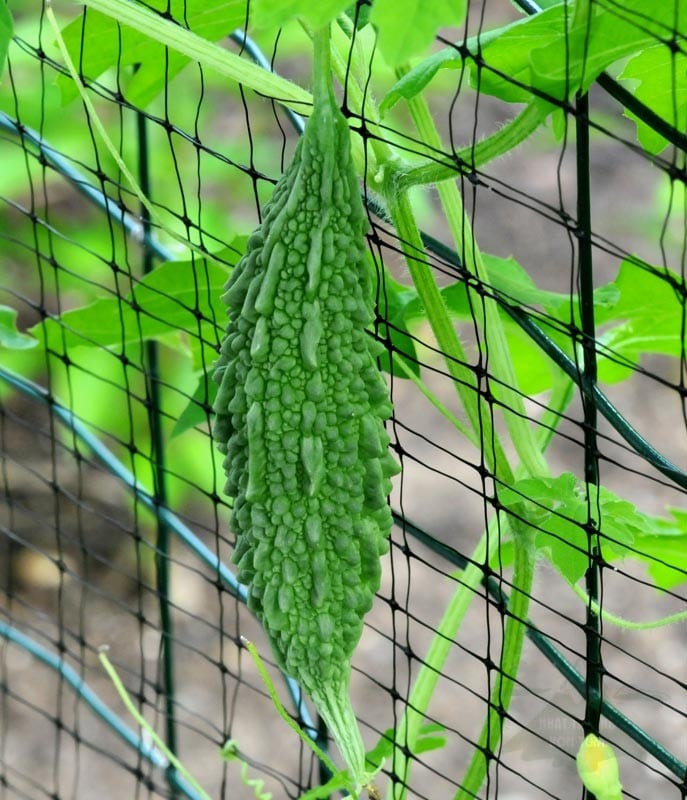
Once the seedlings reach about 30 cm in height and have 5–6 true leaves, they will begin producing tendrils. At this stage, transplant them into larger containers or garden soil and build a trellis.
You can use A-shaped or X-shaped trellises, or simply let the vines climb walls or netting. As the plants grow rapidly, gently guide the vines so they spread evenly. This prevents overcrowding and encourages better flowering and fruit production. Water the plants twice daily to maintain proper moisture.
4. Flowering and Fruiting
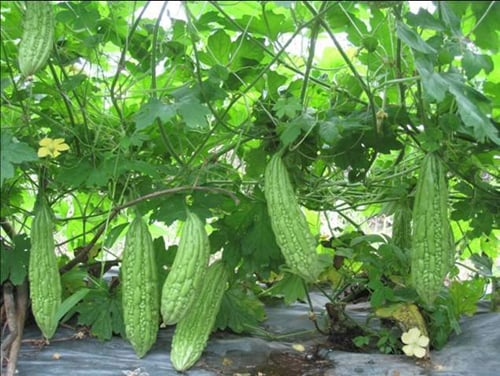
A few weeks after planting, the vines will begin to bloom. Male flowers appear first, followed by female flowers (easy to identify by the small fruit at the base). Pollination can occur naturally with the help of bees and butterflies, or you can hand-pollinate the flowers for better yields. Keep in mind that male flowers last only a single day.
About five days after successful pollination, the young fruit will begin to develop. The tiny bitter melon grows from the base of the female flower and gradually enlarges to full size. During this period, prune excess leaves around the fruit to increase airflow and allow more sunlight to reach it, helping the fruit grow faster and more uniformly.
Growing Hybrid Bitter Melon Varieties
1. Selecting Hybrid Seeds
Popular hybrid varieties include Chiatai, 054, 185, East-West 241, 242, 277, and TS-01. For a 1,000 m² area, you’ll need around 0.5 kg of seeds.
2. Germinating Hybrid Seeds
Soak the seeds in warm water (a 2:3 mixture of boiling and cold water) for 5–6 hours. Wrap them in a damp cloth for about 24 hours, then wash off any sticky coating on the seed surface. Continue incubation until they crack.
Important notes:
-
Don’t let the cloth become too wet—it may cause seeds to rot.
-
Do not allow the roots to grow too long before sowing to avoid breakage.
Sow seeds 0.2 cm deep, tip facing downward, and cover with a thin layer of straw, ash, or compost. Seven days after sowing, thin out weak seedlings and keep only strong, healthy plants.
Prepare some backup seedlings in soil bags to replace any that fail to sprout or get damaged by pests.
3. Fertilizing
Apply a mixture of 20 kg urea and 5 kg DAP, feeding the plants once every 7 days.
Use a stick about 1.5 cm in diameter to poke small holes 15 cm away from the base of the plant. Place one tablespoon of fertilizer in each hole. For the third feeding, apply DAP in the middle of each plant row.
If the plants appear slow-growing, spray additional organic foliar fertilizer to stimulate flowering and fruit set.
Recommended schedule:
-
When plants have 3–4 true leaves: spray HVP 401.N every 7 days until heavy flowering begins.
-
Before peak flowering: spray HVP Auxin Organic twice within 7 days to promote fruit set.
-
Afterward, continue spraying HVP 401.N weekly to help fruits grow larger and develop better color.
4. Daily Care and Trellising
-
Water regularly, ensuring soil is moist but not waterlogged. Bitter melon needs more water during flowering and fruiting.
-
Remove weeds and prune diseased leaves to maintain good airflow.
-
When plants reach 25–30 cm and have 5–6 true leaves, transplant and provide a trellis. City gardeners can use wall-mounted nets to save space.
5. Flowering and Harvesting
Flowers typically appear a few weeks after planting. Male flowers bloom first, while female flowers—with a tiny fruit beneath—open about a week later. Male flowers bloom in the morning and drop by evening.
About five days after pollination, small fruits appear and gradually mature. At this stage, remove excess foliage near the fruits to allow sunlight to reach them, which improves size and quality.
With proper care, your bitter melon vines will produce continuously throughout the growing season, giving you fresh, organic fruits right at home.
News in the same category


Had no clue about this

Why Does Your Refrigerator Frost Over and Does It Increase Electricity Consumption?
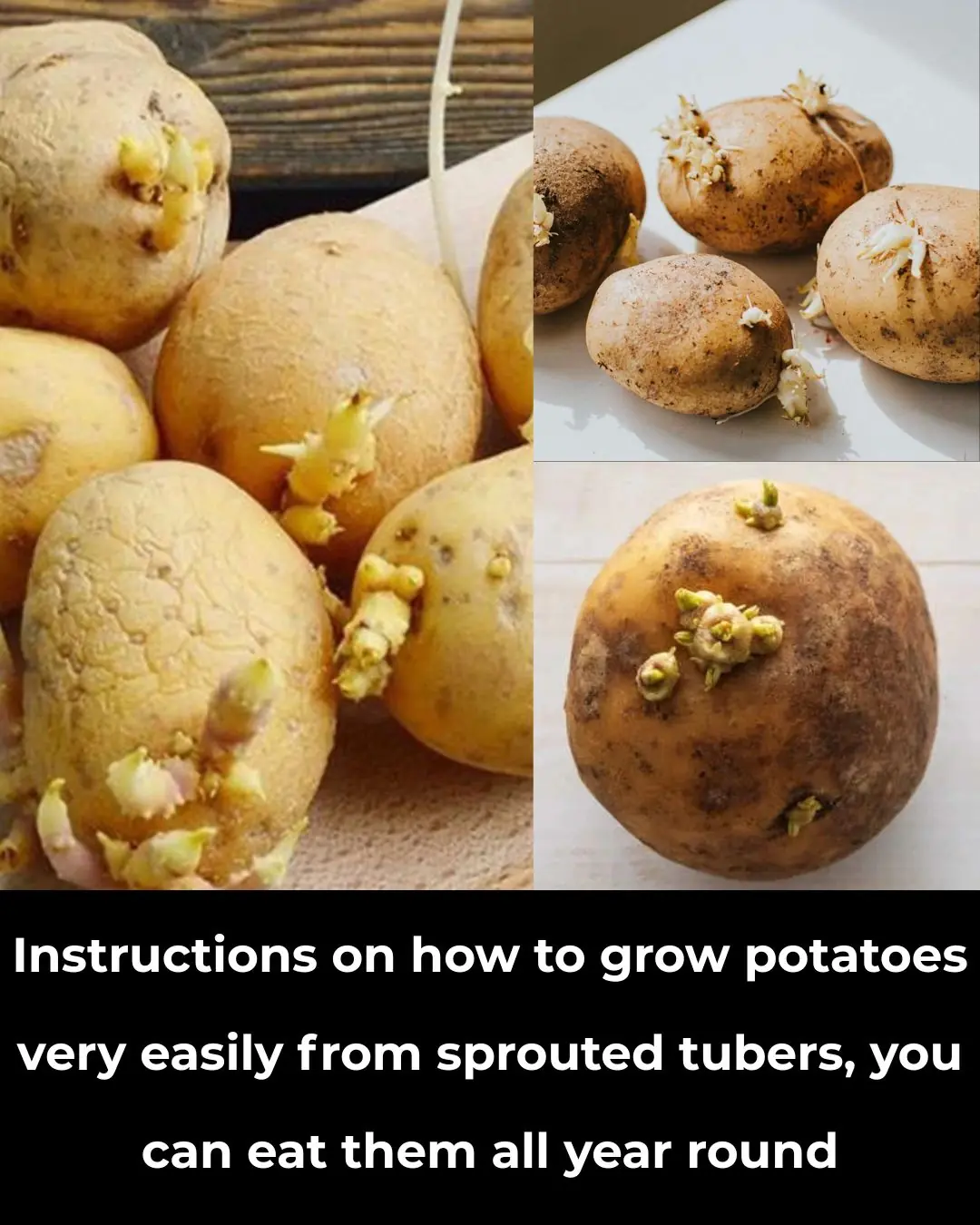
How to Grow Potatoes Easily from Sprouted Tubers and Enjoy Them All Year Round

You are doing it all wrong. Here’s the right way to ease morning stiffness

You are doing it all wrong. Here’s the right way to clear sinus pressure fast

Doctors Warn: 4 Types of Inflammation That Can Turn Into Cancer Within a Year If Left Untreated
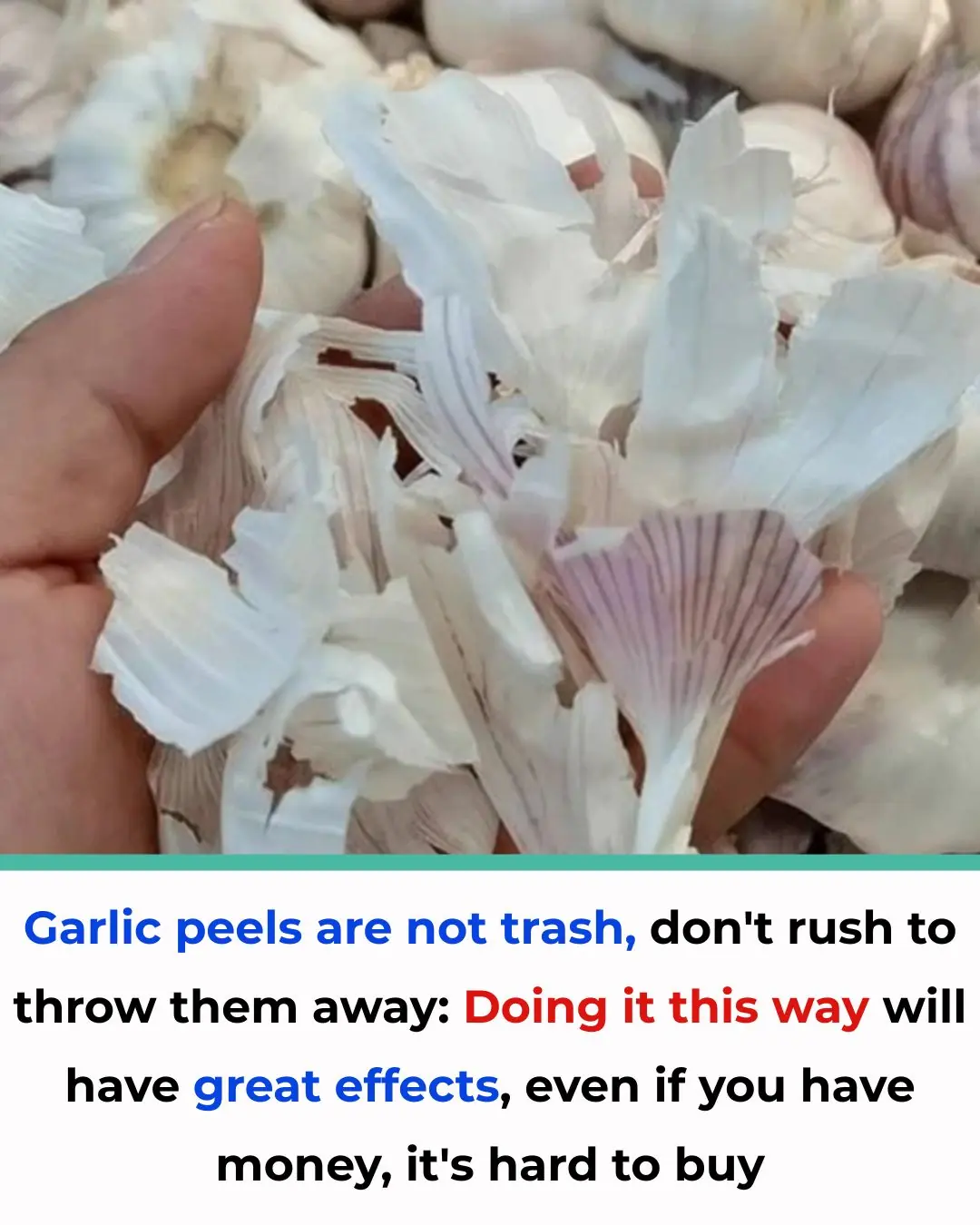
**Garlic Skins Are Not Trash — Don’t Throw Them Away Yet!

There are too many geckos in the house, give you some tips to make them 'once gone and never come back'

When cleaning the house, add this to the water and the floor will be as clean as new

How to boil chicken until it's soft and sweet

Washing your hair with rice water helps your hair get rid of dandruff

Experience growing tomatoes in fruitful pots

My nana taught me this hack to strengthen thinning hair in 7 mins with 0 work. Here’s how it works

You cook all day but you probably don't know these 3 ways to cook rice.

Toilet lid and seat are yellowed for a long time: Apply this tip to make the toilet white and free of bad odors

Soak garlic in dishwashing liquid: 'Miracle water' solves many household problems that very few people know about

3 ways to wash fans without removing the fan cage: Women can do it well too

10 Effective Ways to Reduce Dust in Your Home – Keep Your Living Space Clean and Healthy
News Post

Unlock Radiant Skin: The Ultimate Guide to Using Beetroot Gel for Glowing, Spotless Skin

Fenugreek Seeds for Hair Growth: The Power of Fenugreek Hair Rinse and Its Benefits for Hair

Japanese Milk Wax To Get Rid Of Unwanted Facial Hair

When Will I Outgrow My Acne? The Difference Between Adult and Teen Acne

5 Mascara Tips For Short Lashes

LEVEL UP YOUR LASH GAME: Top 5 Tips for Eyelash Extension Success!

Forehead Acne and What to Do About It

11 Common Eyebrow Mistakes Women Make in Their 60s (And How to Fix Them!)

How to Prevent and Treat Age Spots: Expert Tips for Radiant Skin

5 Ways Your Skin Changes as You Age and How to Keep It Vibrant

DIY Fenugreek Oil for Hair Growth – Get Thick Hair

Brow Boosting Serum: The Natural Way to Achieve Full, Thick Eyebrows

Why You Should Be Putting Salt in Your Toilet

Why Some Children Don’t Visit Their Parents Often

DIY Vaseline Cream: The 4-Ingredient Glow Hack That Makes Your Skin Baby-Soft Overnight

DIY Fenugreek Hair Masks for Hair Growth & Reducing Hair Fall

Will Americans Receive $2,000 Stimulus Checks? What You Need to Know

Revolutionary Miniature Implant Offers New Hope for Restoring Vision in Macular Degeneration Patients

A Simple Superfood That Enhances Your Baby's Brain Development During Pregnancy
